What Are Good Things To Throw In Your Garden
![]()
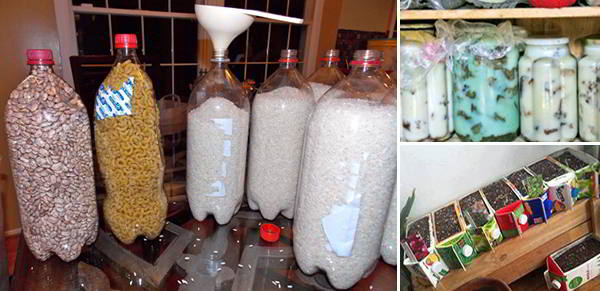
30 Smart Ways to Reuse Things That You Usually Throw Away
My grandparents never threw away a thing that could have been used later on. They were the old time preppers: stockpiling and re-purposing almost everything.
Today we live in a throwaway society, where even our water comes in a disposable, single use bottle. Electronics and other consumer goods are expected to last until the next, better model comes out. Our landfills are filling up and this throwaway mentality benefits only the producer who can sell more.
Americans throw away up to one third of our edible food and half of all produce. Simply using all of the food that we purchase frees up money for other supplies and reduces waste of food and water.
Resetting our attitudes to use items completely, then recycling whenever possible, saves money and landfill space.
-
Start by using the parts you normally toss. Toss peelings and other vegetable trimmings into a bag in the freezer. Add these to the pot when making broth.
- Replant root ends of celery, green onions and similar vegetables along with the seeds of fruits and vegetables.
- No garden space? Toss your seeds in an empty, untended lot. Some will grow without any attention.
- Make juice, wine, beer or vinegar from fruit peels and cores. Here is a recipe for making raw apple cider vinegar at home.
- Adopt a use strategy for all leftovers. Use them at following meals, freeze them for an easy lunch, or dehydrate suitable items for shelf stable storage.
-
You can even pressure can leftover meats, vegetables, fruits, soups and stews to add to your food storage. Here is a step by step guide with pictures on how to can chicken.
- Eggshells are a valuable source of calcium. Add them your compost or dig them into the garden. Feed them to the chickens or clean them and grind them to make a calcium supplement for the family.
- Bones are a good source of phosphorus and calcium. Save them to make bone broth, then dry them and grind them to make bone meal for the garden.
- Coffee grounds and used tea bags are valuable to your compost pile or earthworm bed. You can also add them directly to the garden for acid loving plants.
Meat Fats
- Meat fats are valuable for cooking and seasoning foods. Most everyone is familiar with using bacon fat to season vegetables and meat, but other fats can also be used.
- Duck fat or ham drippings are excellent for roasting potatoes, chicken fat is flavorful used in moderation.
-
Save the fat trimmings from pork in the freezer to render into lard.
- Fats can also be burned in candles or soaked into paper or cardboard for use as a firestarter. Be aware that in a SHTF situation, the smell of bacon from a firestarter or candle might draw unwanted attention.
Related:5 Ways to Make Survival Candles From Household Items
Drink Bottles
-
Plastic soda bottles and other drink bottles are useful containers for long term storage. The first and most important thing to store in empty drink bottles is water. Simply wash the container thoroughly and fill it with water. Cap it, date it and put it away. Empty and refill it yearly, checking for leaks as you go.
- Plastic soda bottles can also be used to store dry goods. Be sure your bottle is clean and completely dry. Fill with rice, corn, grits, beans, small pasta, etc. Add an oxygen absorber for long term storage and seal tightly. Store in a cool, dark place. You can also used them to store ammo.
- Cut off the base and use bottle tops as a mini greenhouse to start seeds outside in the spring, or to make self-watering pots for growing herbs and other container plants.
- Cut a bottle top on the diagonal to make scoops for your buckets of rice, etc.Cut the bottom straight across and use it to start seeds.
Cartons
-
Do you prefer your soda or juice from a can? Hopefully, you already recycle the cans, but those cartons can be useful, too. They are the perfect size for holding cans of vegetables, soups, etc. If you cut a can size opening in the top back, fill from the back and remove cans from the front, they will automatically rotate your supply. Fill each carton with one type of food and stack them for a compact storage solution.
- Fill boxes with soil for a short-term container garden or fill with straw for growing potatoes.
Coffee Cans, Yogurt Cups, Jars And Tubs
-
Many of us have a cupboard overflowing with these reusable containers, but we never use them. Use the yogurt cups and tubs to start seeds or store leftovers and dry goods.
- Jars with sealable lids are good for storing dry goods like cornstarch, baking soda, powdered sugar, and other baking supplies purchased in smaller quantities. Jars offer more protection from humidity and pests than the original box.
- Coffee cans can be used as a growing container for small plants, or for crafts and storage.
Related:How I Grow My Herbs Indoors
Cardboard
-
You can save on plastic bags by bringing groceries home in a box, but the box presents a new recycling challenge. If you have young children, you already know that cardboard boxes make many imaginative play toys. Here are a just a few more ideas: open the ends and tape them together to make tunnels, forts and playhouses.
- Decorate them to make cars, fire trucks, spaceships and other vehicles.
- Make doll furniture and temporary furniture for small children and pets.
- Use them as a canvas for drawing and painting. Let imaginations run wild.
-
Cardboard burns well, so it is useful as a fire starter or kindling. Tear it into strips and soak it in paraffin wax for excellent charcoal starters and fire starters. This is a good use for cereal boxes, toilet rolls and extra cardboard of all types. Without the wax coating it will burn faster, but is still a useful fire starter.
Related:How to Make Firebricks (fire logs) and Wood Stove Logs for Free!
Plastic Grocery Bags
-
Plastic bags are reusable in many ways. Tie them into knots to make an improvised dish scrubber. Or loop them into a longer loofa. Here are another 21 survival uses for plastic bags.
- Iron plastic grocery bags together on the lowest setting (and use a press cloth) to make a stronger plastic material for making reusable shopping bags or plastic sheeting for any use. Overlap the bags when ironing to make large sheets of any size and thickness. Plastic sheeting made this way can be seen to make many useful items.
- Cut plastic bags into strips and braid into ropes of any size or thickness. Overlap strips to continue braiding until the desired length is reached. Braid thinner ropes together to make thicker, stronger ropes.
You may also like:
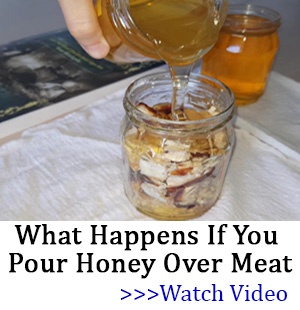 10 Awesome Food Ideas for Your Bug Out Bag
10 Awesome Food Ideas for Your Bug Out Bag
When Grocery Stores Go Empty – A Back Door Shopping Strategy (Video)
How To Make Potato Flakes With 5 Years Shelf Life (without refrigeration)
How To Buy and Store 260 Pounds of Food for just $83
Top 10 Foods to Grow for Survival
![]()
What Are Good Things To Throw In Your Garden
Source: https://www.askaprepper.com/30-smart-ways-reuse-things-usually-throw-away/
Posted by: adornofreeack.blogspot.com

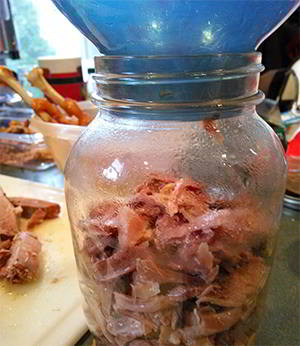 You can even pressure can leftover meats, vegetables, fruits, soups and stews to add to your food storage. Here is a step by step guide with pictures on
You can even pressure can leftover meats, vegetables, fruits, soups and stews to add to your food storage. Here is a step by step guide with pictures on 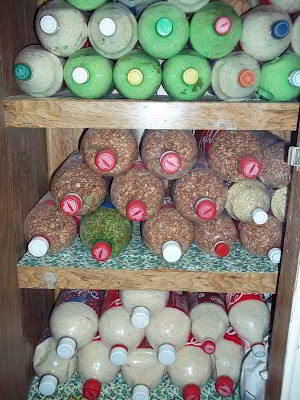 Plastic soda bottles and other drink bottles are useful containers for long term storage. The first and most important thing to store in empty drink bottles is water. Simply wash the container thoroughly and fill it with water. Cap it, date it and put it away. Empty and refill it yearly, checking for leaks as you go.
Plastic soda bottles and other drink bottles are useful containers for long term storage. The first and most important thing to store in empty drink bottles is water. Simply wash the container thoroughly and fill it with water. Cap it, date it and put it away. Empty and refill it yearly, checking for leaks as you go.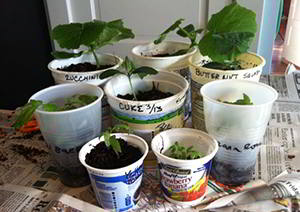 Many of us have a cupboard overflowing with these reusable containers, but we never use them. Use the yogurt cups and tubs to start seeds or store leftovers and dry goods.
Many of us have a cupboard overflowing with these reusable containers, but we never use them. Use the yogurt cups and tubs to start seeds or store leftovers and dry goods.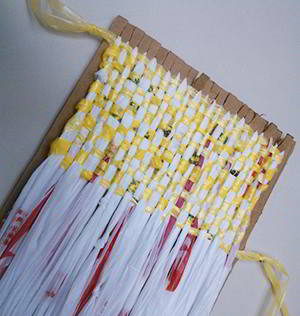 Plastic bags are reusable in many ways. Tie them into knots to make an improvised dish scrubber. Or loop them into a longer loofa. Here are another
Plastic bags are reusable in many ways. Tie them into knots to make an improvised dish scrubber. Or loop them into a longer loofa. Here are another
0 Response to "What Are Good Things To Throw In Your Garden"
Post a Comment